I Played Prestwick's Original 12-Hole Open Layout With Hickories
Fergus Bisset travelled to Prestwick to play the original 12-hole Open course, laid out to celebrate the 150th running of the event.


In nearly 20 years as a golf journalist, I hadn’t played a round using hickory-shafted clubs until last week. Opportunities had arisen but for one reason or another (maybe because of my innate fear of making a fool of myself,) I hadn’t done it. Prestwick Golf Club, over the original 12-hole course, on which the first Open was contested in 1860, seemed a pretty good (if exacting) place to make my hickory debut.

Playing to the 12th hole with the clubhouse behind
This year saw the playing of the 150th Open Championship over the Old Course in St Andrews. It’s 162 years since the first “Open” was played at Prestwick in 1860 but a couple of missed years in the early days, the World Wars and Covid meant it took a little more time to get 150 championships done.
The Plan at Prestwick

Prestwick Golf Club was keen to mark the occasion but wanted to ensure their celebrations didn’t clash with the 150th Open in July. The solution was to run their events at the time of year the original Open was contested – that first one was arranged around the Prestwick Golf Club Autumn Meeting in October 1860.
Prestwick’s celebrations have centred around the recreation of the original, Old Tom Morris, 12-hole course that was in play from the inception of the club in 1851 until 1882 – 15 early Opens were decided over that layout.
The club has recreated the original layout before, most recently in 2005, but never more than in a fairly rudimentary fashion. This time out, under the leadership of head greenkeeper Dave Edmondson, the team worked extremely hard to recreate the original layout as faithfully as possible. Fairways were reclaimed on the 1st/12th and 6th holes and a new green was laid on the site of the original 7th green. The result is impressive. The greens set on current fairways are excellent and those fortunate enough to play – Prestwick members, the media, representatives from the other Open venues around the country, plus visiting golfers who secured a tee time will enjoy, or have enjoyed a unique, historical golfing experience.
The Course
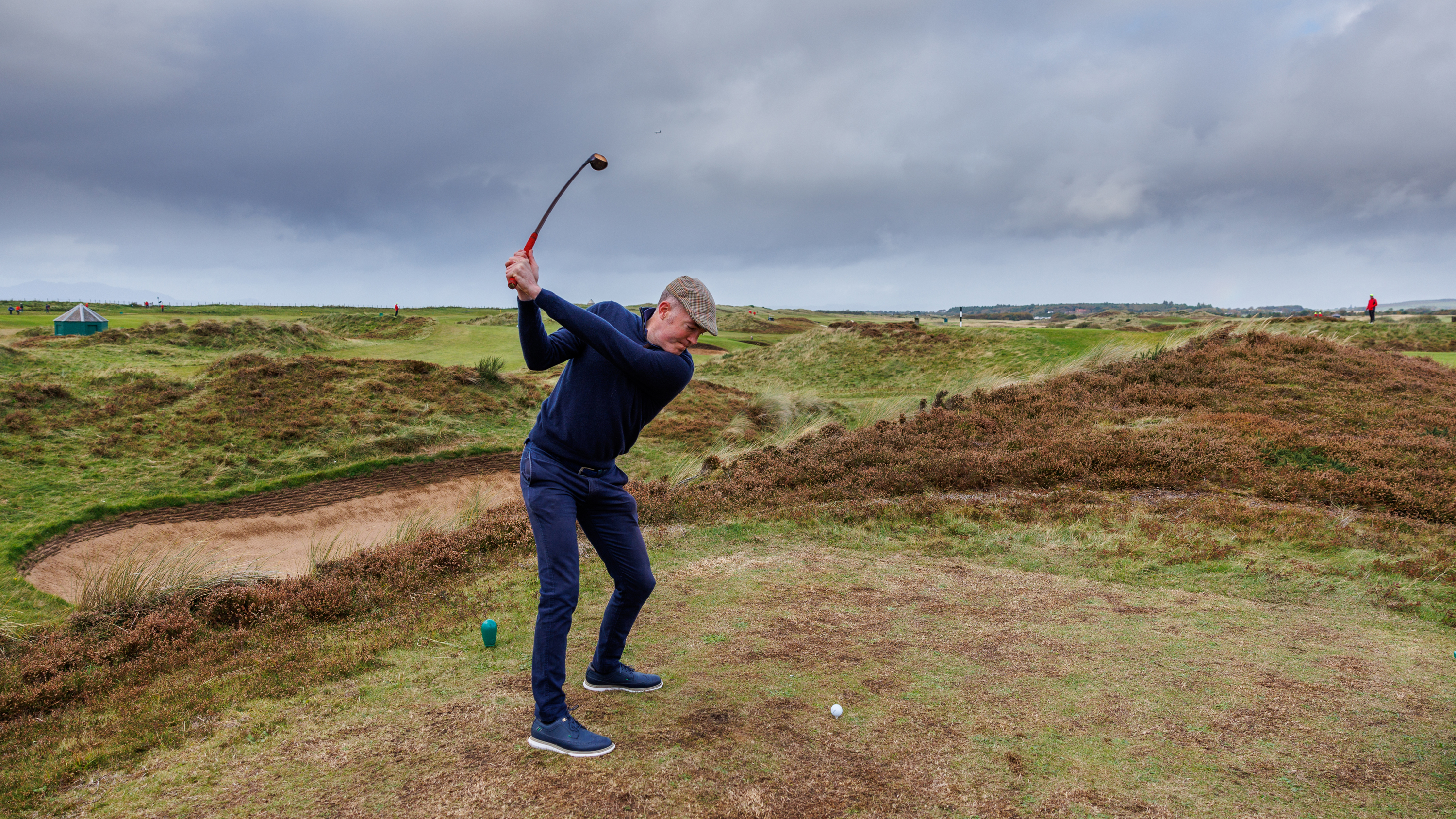
The 2nd tee
By modern standards, Old Tom Morris' first layout at Prestwick is fairly bonkers. Safe to say, they didn’t put health and safety high on the priority list back then. When he arrived in Prestwick to take the job as Keeper of the Green, Old Tom walked out on to the links with feathers and marked the most appropriate green sites. The routing to those greens was a secondary thought.
As it was/is, there are shared fairways, crossovers and blind shots galore. It’s so difficult to see where you’re going and where other groups are that Prestwick tasked their caddies with marshalling the course over the two weeks of celebrations in October. Each group has a forecaddie with a walkie talkie, checking others’ positions. And, there are 18 on-course marshals standing atop the dunes surveying and feeding back on the carnage.
Subscribe to the Golf Monthly newsletter to stay up to date with all the latest tour news, equipment news, reviews, head-to-heads and buyer’s guides from our team of experienced experts.
There’s one particular spot where the 6th, 2nd, 9th, 10th and, to an extent, 4th holes meet in the middle that was described by Secretary Ken Goodwin before we played as the “Kill Zone.” When standing in the very centre, you do feel balls could come at you from anywhere. The old players were either very accurate, very brave or very well spread out… I think a bit of all three.
The course is great fun to play, just like modern Prestwick. A number of the features are familiar, Purgatory and Pandemonium, the sleepered bunkers on the regular 3rd come into play as does the whole of the current 17th “Alps” – it’s the 2nd on the original layout.
The 1st hole is a real brute at 578 yards out from the edge of the links. It’s quite incredible to think that Young Tom Morris made a 3 on this hole enroute to a course record of 47 in the 1870 Open.
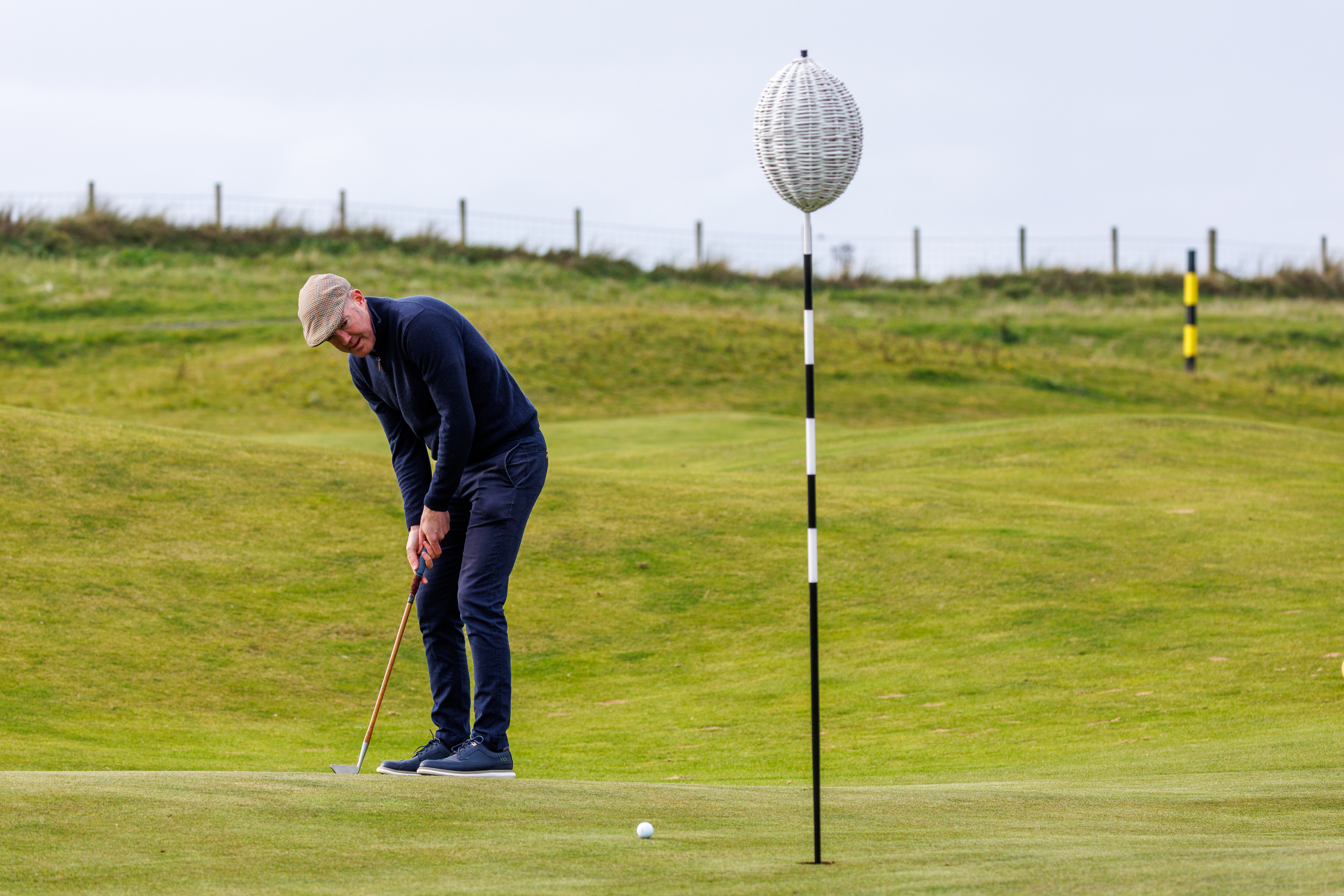
Baskets were used until 1910.
An interesting feature to note was that Prestwick used baskets rather than flags up until about 1910. It’s thought that Hugh Wilson, the architect of Merion’s East Course (famous for its baskets,) visited Prestwick, saw the baskets in use and took that idea back across the pond.
What's It Like Playing With Hickories?
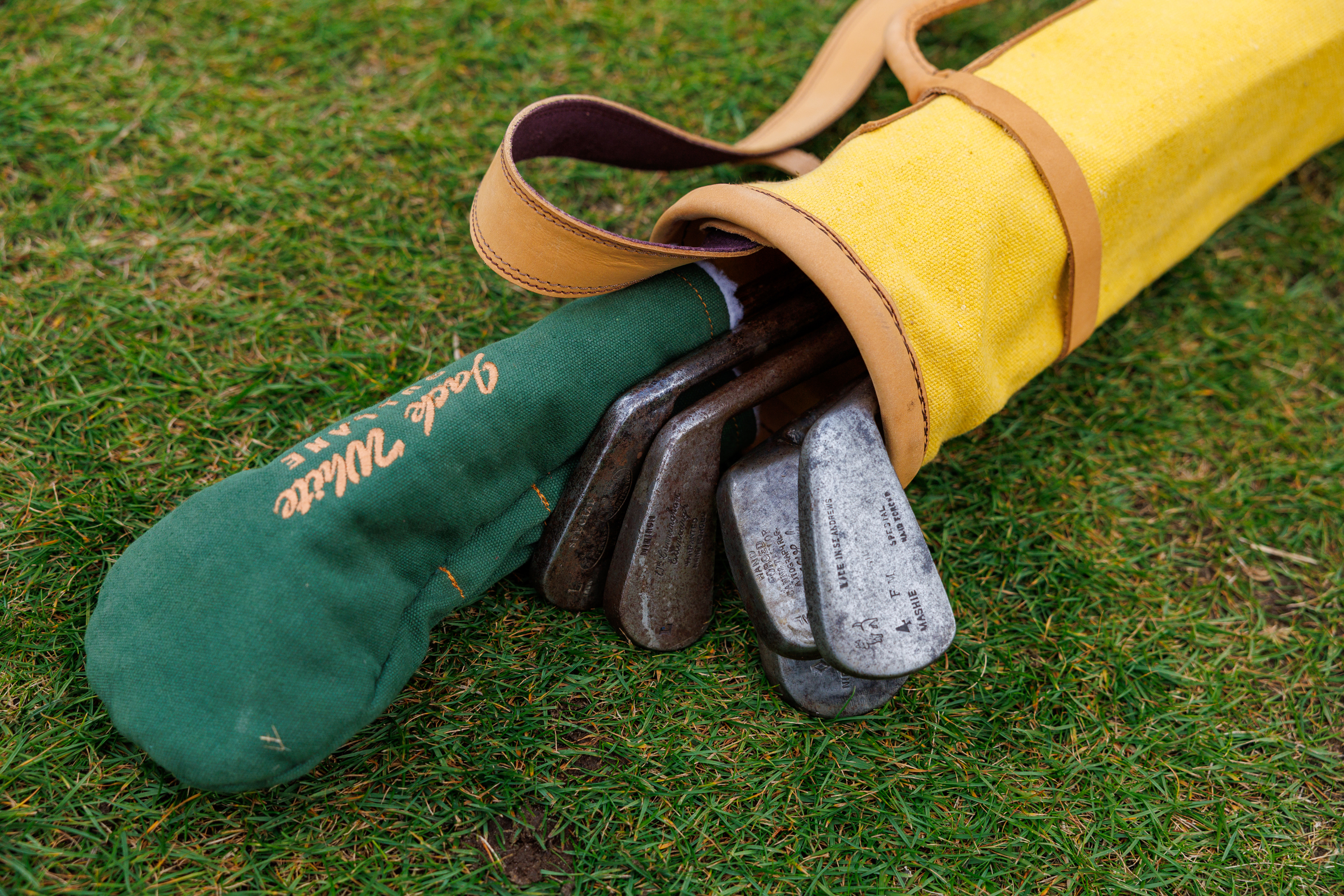
Jack White of Gullane compiles and provides hickory sets
Prestwick had rented 40 sets of hickory-shafted clubs from Jack White of Gullane. Each set comprised of a selection of clubs to (supposedly) give you enough options when out on the links.
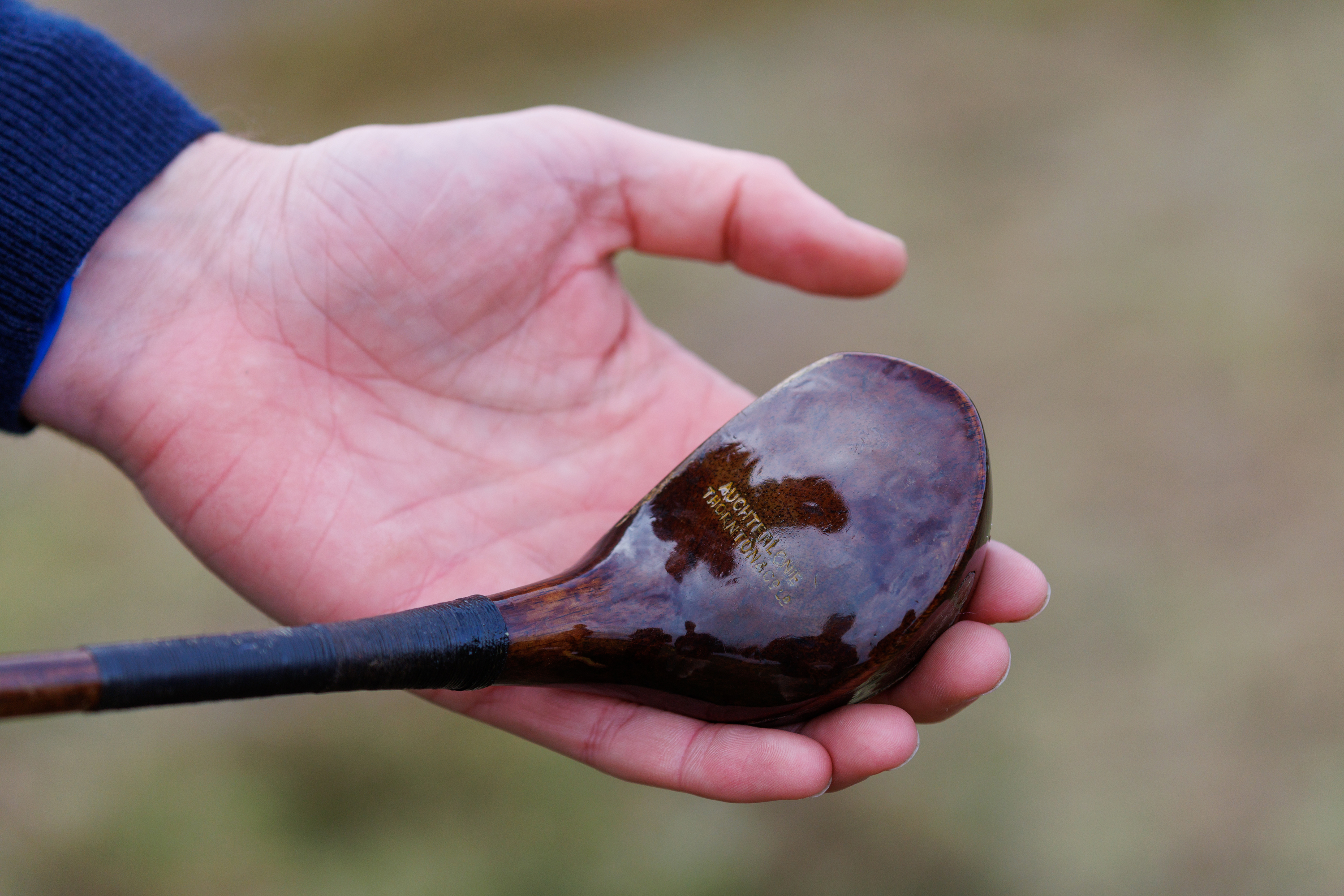
A very small head!
I picked a bag at random and had a look at those “options”. Well, under the headcover was an Auchterlonies spoon that looked to me very much more ornamental than functional (although it did prove reasonably effective,) a couple of “mid-irons” that looked more suitable for shaving or buttering toast with, a handy looking “mashie” and a couple of lofted “niblicks” together with a strange looking blade putter called the “UOT” which seemed to work ok despite its design – Very narrow with a longer top section than sole…

A strangely designed putter
We were playing a shotgun start and were starting from the 6th hole. It’s a daunting drive as it’s tough to see where you’re trying to aim for. It’s particularly difficult when you look down at the head of a “spoon” that appears little bigger than the ball and you have no idea how the hickory shaft or the head is going to react. As it was, the ball (I’d chosen to play ProV1 – you’re advised to go for something soft) went forwards and roughly in the right direction… Golfing miracles do happen.
The ”mashie” turned out to be the key club in my bag and I found it easier to try and manipulate it than to work out how far each of the other sticks would go – although I did manage a couple of lofted shots with a niblick that weren’t wholly ineffective.
The feeling at strike is quite dead compared to modern clubs and the reverberations are significant when you don’t get it right. But a shot right out of the middle still goes pretty well and I reckoned I could get the mashie (seemed like about a modern 6-iron) to go about 160 yards.

Sand tees for iron shots
The grips were of a comfy, felt-like material and we used sand to tee up on when using an iron. Putting was tough to get used to but when I understood that my UOT was more like a chipper and would take some air after the strike, I enjoyed a bit of success with it – I even made a couple of birdies.
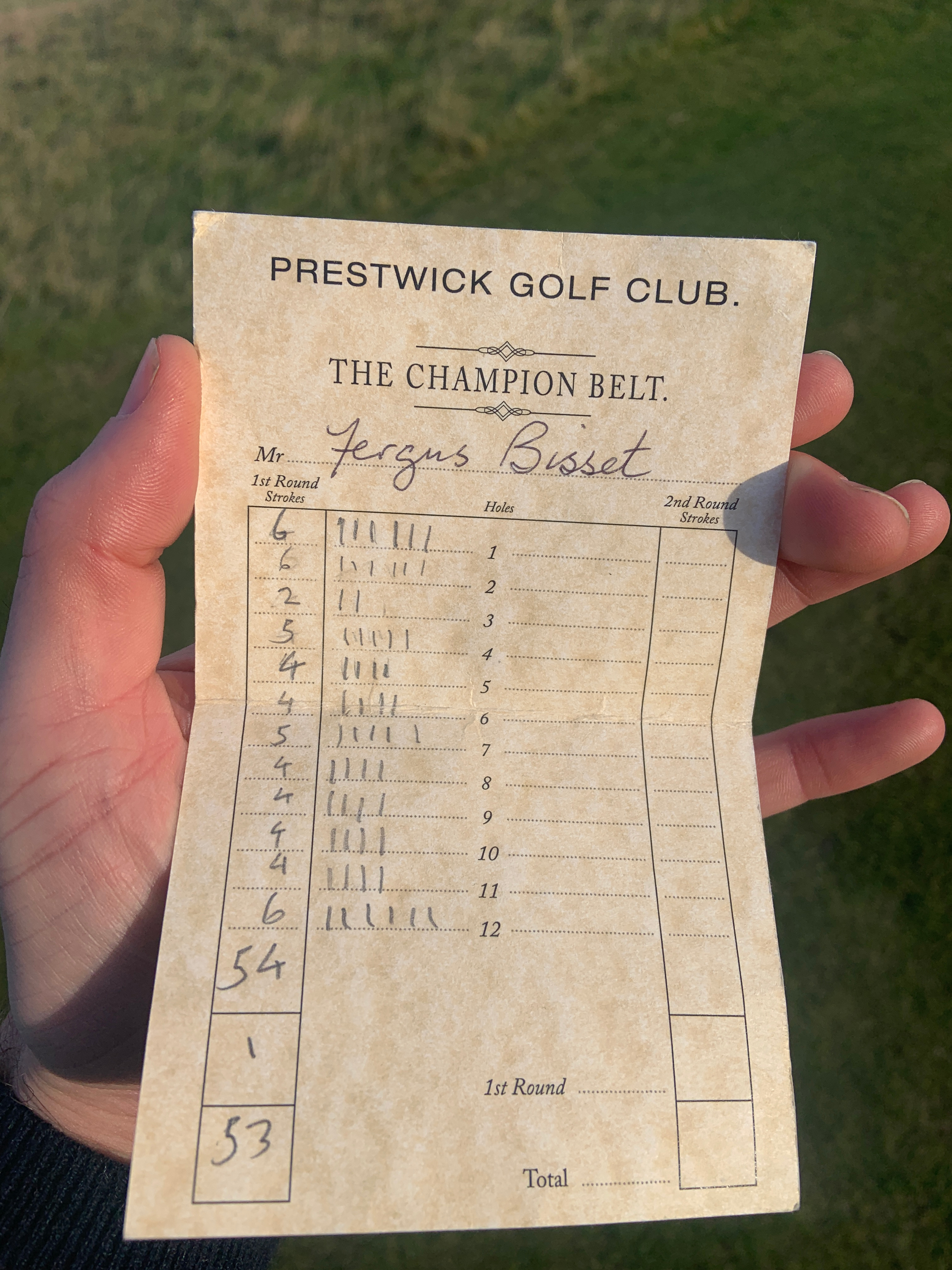
Could have been a lot worse!
In the end I was round in 54 (nett 53) and felt pretty pleased with that – 7 shots worse than Young Tom’s record though, and I was using a ball that was properly round!
The Early Opens At Prestwick
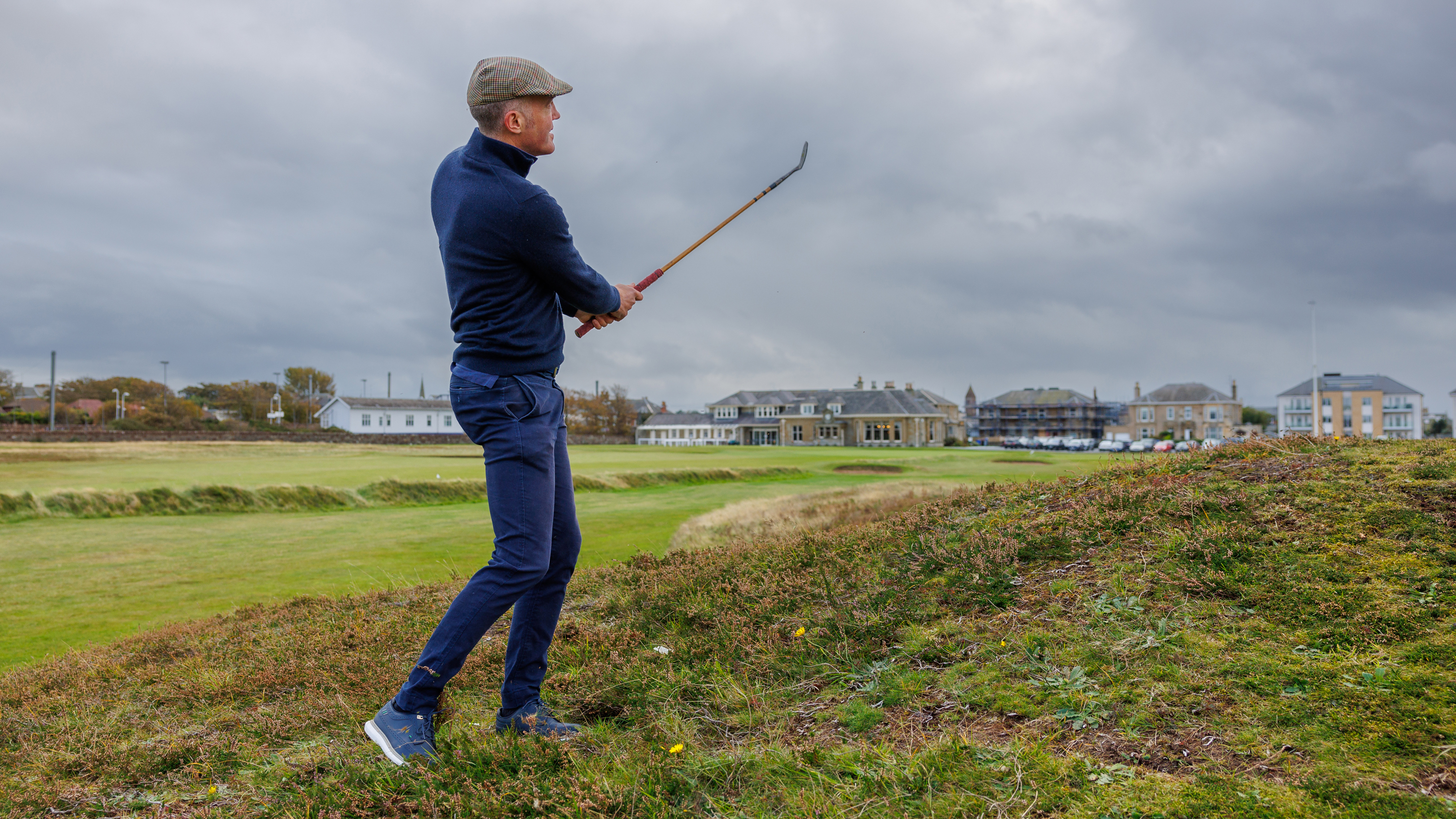
A shot from the rough
Until his death in 1859 Allan Robertson was considered the champion golfer and after he had gone the question was who was now the best? Prestwick members decided to find out. Letters were sent to leading British clubs, inviting them to send their most reputable (and best) caddies for a competition to be held over the links in October 1860. There were eight entrants and Willie Park Snr of Musselburgh was the winner.
For that first Open a red morocco leather and silver “Challenge Belt” was first prize. No prizemoney was up for grabs, although the professionals were able to earn some pay by caddying for Prestwick members during the week of the competition and by placing side wagers.
Old and Young Tom Morris won eight of the first 12 Opens. In 1870, Tommy was the first man to win The Open three years straight – including that round of 47. He kept the belt in so doing. Tommy won again at Prestwick in 1872 and his was the first name inscribed on the new trophy, although he wasn’t actually presented with it then as it wasn’t ready.
There were three more championships played over the 12-hole course after that, the last being won by Bob Ferguson in 1881. Overall The Open was held 24 times at Prestwick, lastly in 1925 when Jim Barnes was champion.

Fergus is Golf Monthly's resident expert on the history of the game and has written extensively on that subject. He has also worked with Golf Monthly to produce a podcast series. Called 18 Majors: The Golf History Show it offers new and in-depth perspectives on some of the most important moments in golf's long history. You can find all the details about it here.
He is a golf obsessive and 1-handicapper. Growing up in the North East of Scotland, golf runs through his veins and his passion for the sport was bolstered during his time at St Andrews university studying history. He went on to earn a post graduate diploma from the London School of Journalism. Fergus has worked for Golf Monthly since 2004 and has written two books on the game; "Great Golf Debates" together with Jezz Ellwood of Golf Monthly and the history section of "The Ultimate Golf Book" together with Neil Tappin , also of Golf Monthly.
Fergus once shanked a ball from just over Granny Clark's Wynd on the 18th of the Old Course that struck the St Andrews Golf Club and rebounded into the Valley of Sin, from where he saved par. Who says there's no golfing god?